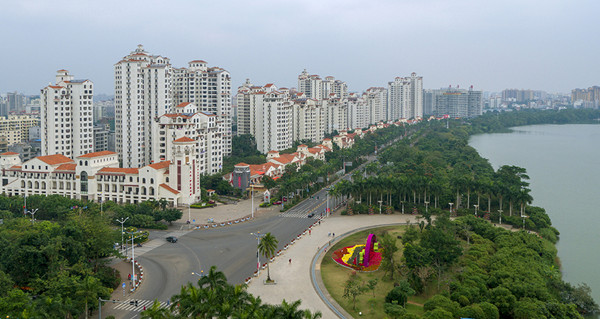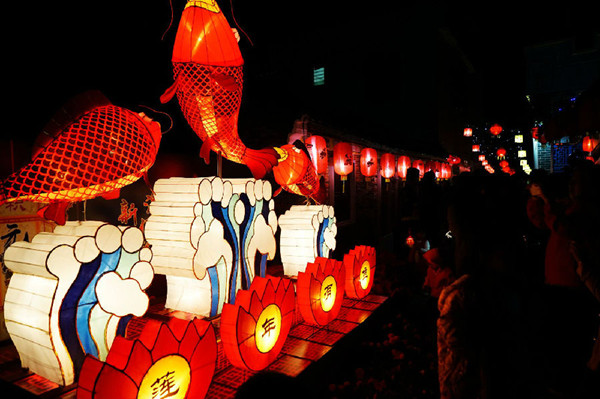
Aerial view of Wanquan River [Photo/qionghai.hainan.gov.cn]
Lying in the eastern part of Hainan province at the lower reach of Wanquan River, Qionghai is the seat of the Boao Forum for Asia. Young and charming, the city has an area of 1,710 square kilometers and a population of 510,800. About 550,000 natives of Qionghai live overseas, residing in Hong Kong, Macao, Taiwan and 28 other countries or regions around the globe.

Lantern show in Jiaji Street [Photo/qionghai.hainan.gov.cn]
The government of Qionghai has made greater efforts to accelerate the urbanization of the city in recent years to solve issues related to agriculture, farmers and rural areas, support regional economic development, and provide opportunities to grow domestic demand and promote industrial upgrading. Integrating tourism and agriculture, the city has developed agri-tourism as an effective way to create additional income for local farmers. Under this mode, tourists can experience a nostalgic, rural life, while farmers can enjoy a higher quality urban life.
Famous scenic spots in Qionghai include the Baishi Mountain Scenic Area, Boao Longtanyang Agriculture Park, Boao Temple, the site of the Boao Forum for Asia, the Red Detachment of Women Memorial, and Tanmen Old Ferry.
In 2020, the city's regional GDP was 29.21 billion yuan ($4.54 billion), a year-on-year increase of 3 percent at constant prices. The rate of growth was 0.5 percent lower than the provincial rate and 0.7 percent higher than the national rate. The added value of the primary industry was 9.46 billion yuan, a year-on-year increase of 4.6 percent; the added value of the secondary industry was 4.02 billion yuan, a year-on-year increase of 13.9 percent; the added value of the tertiary industry was 15.73 billion yuan, a year-on-year decrease of 0.5 percent.
In 2020, the per capita disposable income of urban and rural residents in Qionghai was 26,745 yuan, up 5.7 percent year-on-year, 2.7 percentage points higher than the growth rate of GDP and 1.1 percentage points higher than the provincial average. The per capita disposable income of urban permanent residents was 36,711 yuan, a year-on-year increase of 3.1 percent. That of rural residents was 17,905 yuan, ranking second in the province, a year-on-year increase of 7.9 percent.